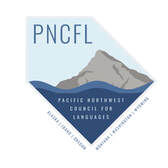|
Happy Frosty February, MALT members! For not experiencing much winter weather in December, we are definitely making up for that now. I hope you are all staying snug and warm in your classrooms with thoughts of spring sustaining your energy!
For many years of my teaching career, I have had a love/hate relationship with this particular time of year. To be truthful, this does not stem from the environmental challenges outside, but instead from the environment inside my classroom as students begin registering for classes for the next school year. How do you continue to make the language skills they are learning seem relevant when everywhere we turn we continue to see a push toward more STEM education? In addition it is extremely frustrating to hear students who are doing well in your classes say, “Well, I only need two years of language for college.” Maybe this is just my own personal battle, but I feel that it is time for this myth to die. Instead, we should be teaching kids to say, “I know I need AT LEAST two years of language for college.” It does not help much that our two flagship universities, Montana State University and the University of Montana, do not currently have a world language requirement to enter their institutions. At MSU, the following statement is at the end of the list of classes you must complete to gain admission:
However, these entrance requirements only tell part of the story. When you look at the list of General Education Requirements for graduation from U of M, the Group III Requirement is for Modern and Classical Languages. To me this is where the importance of what we do at the high school level often gets lost in translation. U of M’s statement is as follows:
In my experience, a student who has had three years of high school world language instruction is generally able to demonstrate proficiency, and the required courses are then waived. So, students study for another year at their respective schools for free, take the placement test at the university, and save tuition dollars because they did not have to take a year of foreign language to be able to graduate from the university. Montana State has a similar requirement that they refer to as a “diversity credit.” To me, this reality makes it more imperative that our verbiage always focus on the idea that a student needs “at least two years.” In addition, we do students a disservice when we refuse to look at requirements from universities in other states. Statements like “two years required, three recommended,” signal that most students will need three years to be considered for admission to those institutions. Not to mention that there are many colleges that have three years as their standard instead of the mythical two years. Do you have students who aspire to attend an Ivy League school? Here is what Harvard states about their admissions requirements:
In the end, I really hate to see any of my students miss out on an opportunity to achieve their educational goals. Several years ago I had a student who believed she only needed two year of a world language, waited until her junior year to begin Spanish I, and was ultimately denied admission to a veterinary school because she did not have the required three years of a world language on her transcript. No student should have this happen in this informational age. So many professions now pay extra money to employees that are bilingual, and a student can only get there if they continue to work on their second language. So, I will continue to fight this battle, and educate my students about some of the unspoken benefits of learning a second language. Eventually I hope all students approach registration with the idea that, “I know I need AT LEAST two years of language for college.” If you agree with me, feel free to share this blog with your administrators and counselors. It’s time we changed the dialogue in February! - Alice Nation, MALT President
1 Comment
|
|
All photographs have been generously provided by our members. Or are sourced from Weebly.
|
Proudly powered by Weebly
|
 RSS Feed
RSS Feed


